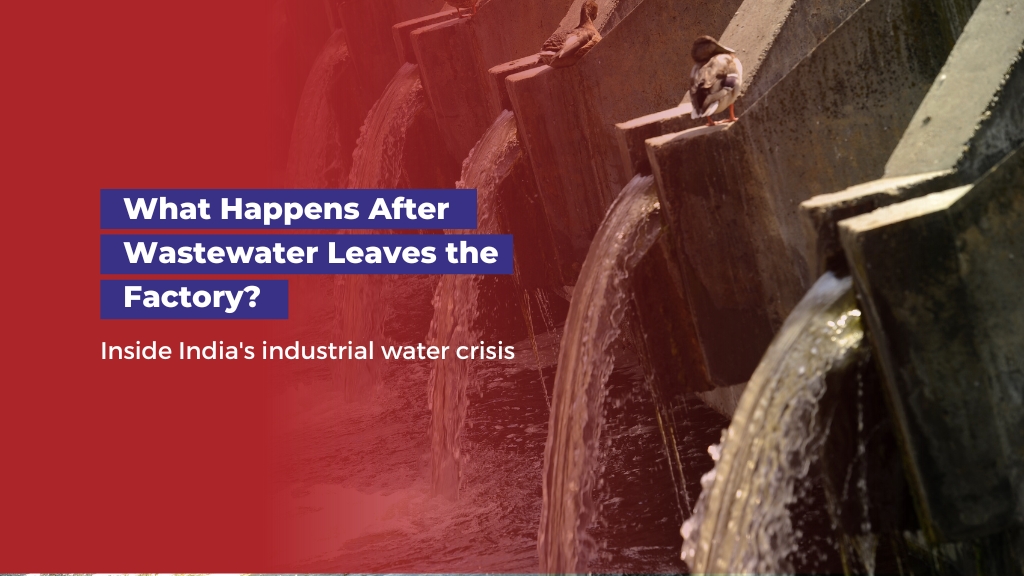Stand behind almost any factory and you’ll find it.
A quiet stream of grey water snaked behind the building. Warm, slow-moving, sometimes foaming. Sometimes there’s a drain. Sometimes it just flows into the soil. No warning board. No sense of where it’s going. But it always goes somewhere.
This is what untreated industrial wastewater looks like. It’s not rare, it’s not distant. It happens every day in thousands of plants across every central manufacturing zone in the country.
And it doesn’t disappear. It enters canals, rivers, lakes, crop fields, and groundwater.
The scale of untreated discharge
India generates massive volumes of industrial wastewater every single day. Yet only a small portion of it is ever treated properly. The rest either seeps out or gets diluted and released. This is not because we lack the technology but because treatment systems are often underdesigned, oversized, or neglected.
This untreated water contains more than colour or odour. It also contains heavy metals, solvents, high salts, and long-term damage.
Why do treatment systems often fail?
Most industrial treatment plants are designed once and left untouched for years. The effluent chemistry changes in many cases, but the system doesn’t. In others, the evaporators choke every few days. Operators override settings. Discharge valves are opened in an emergency. Compliance becomes a formality.
It’s not just about having a ZLD system. It’s about having one that works with the actual effluent a plant generates, not just the one in the datasheet.
What a working ZLD system actually looks like
A functioning zero liquid discharge system isn’t just a combination of RO, evaporator, and crystallizer. It’s a process designed to recover water without constant breakdown.
That means:
- Pre-treatment that matches the hardness of your feed
- RO systems sized for your real recovery goals
- Evaporators that don’t need cleaning every 72 hours
- Solid-handling systems that don’t block flow
- Controls that are easy to operate, not just to showcase
One of the biggest gaps in traditional setups is the evaporator. Most ZLD failures are due to poor evaporator design or maintenance.
Why does this matter more now than ever?
Water reuse is no longer a branding move. Raw water costs are climbing. Audits are stricter.
Buyers, especially those from global markets, are beginning to track environmental data in the same way they track pricing. For many sectors, ZLD is no longer optional. It is the only way to avoid supply chain risks, production halts, or regulatory suspension.
This Environment Day, the challenge isn’t distant. It’s behind your plant.
Sustainability doesn’t begin with a pledge. It starts with a pipe. And that pipe is either helping or harming. There is no neutral ground anymore. The theme of World Environment Day often focuses on forests, oceans, or air. But for industries, it starts with water. What you take, how much you use, and what you return.
This year, don’t just update a tagline or change your packaging to green. Walk to the back of your factory and ask one question: Where does our water go?
If the answer isn’t clear or clean, it’s time to fix it.
Need a ZLD system that won’t fail six months after installation?
We’ll help you build one that works for your water, your plant, and your future.
Visit www.shachiengineering.com

